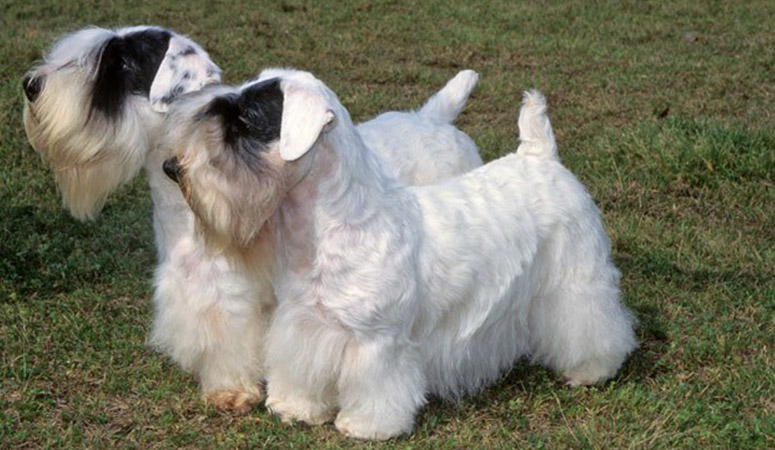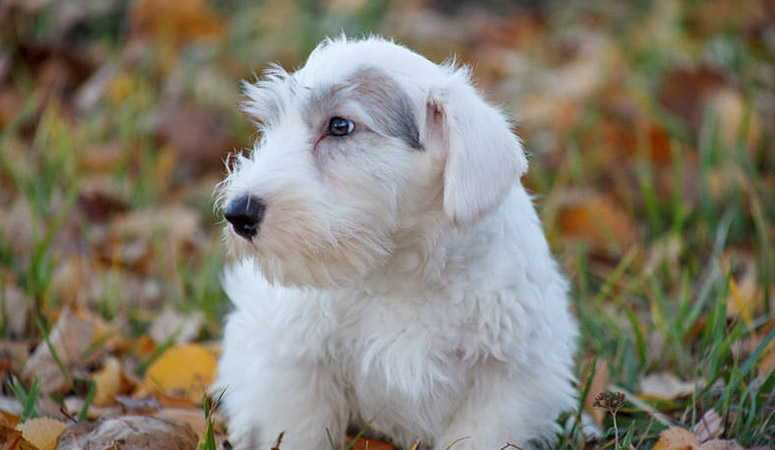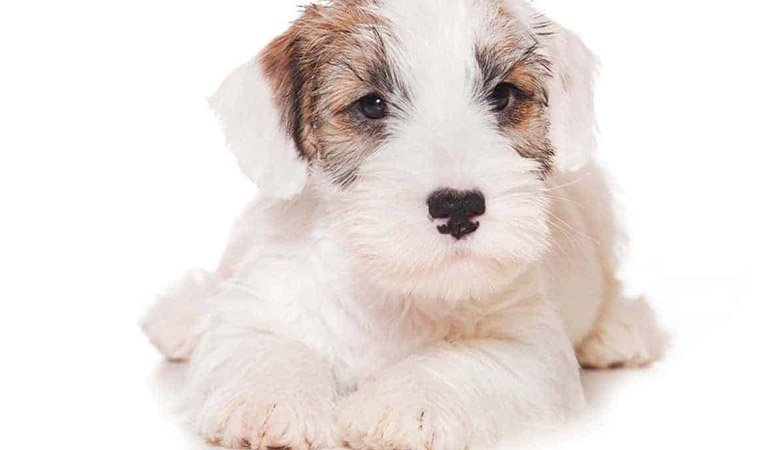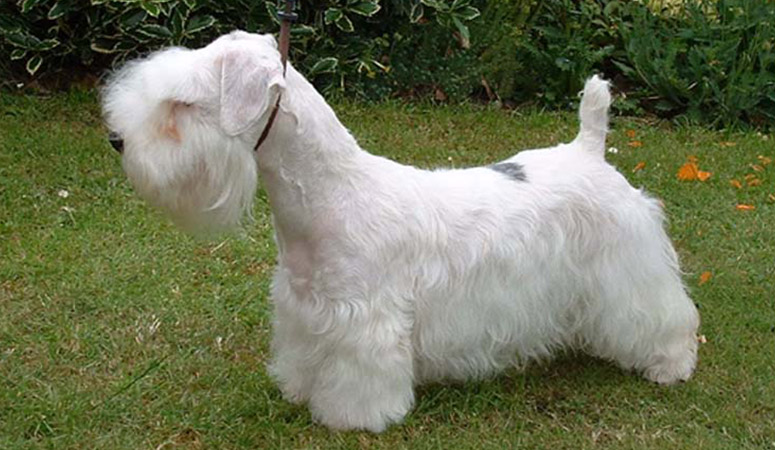Sealyham Terrier
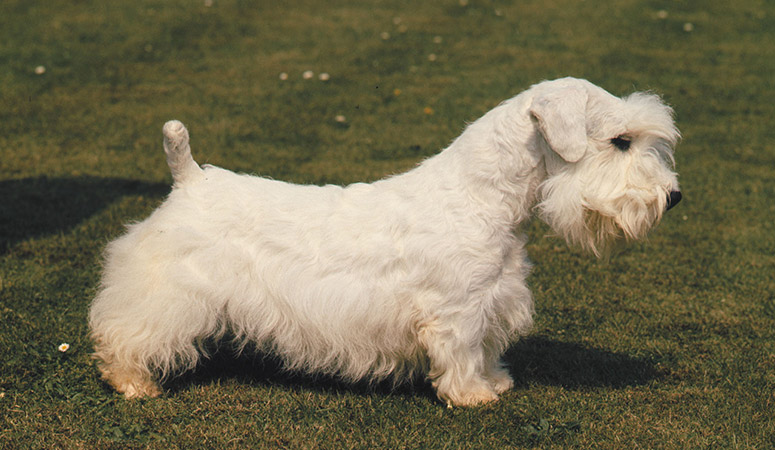
The Sealyham Terrier is a rare Welsh breed of small to medium-sized terrier that originally bred in Wales for hunting otters, foxes, and badgers. Their body is short-coupled, strong, and substantial, allowing for plenty of flexibility. Now, they are great primarily companion dogs and good options for novice pet parents.
| Other Names | Welsh Border Terrier, Cowley Terrier |
| Color | Black, Blue, Brown, Cream, White, Yellow |
| Height | Males: 10-12 inches. Females: 10-12 inches. |
| Weight | Males: 20-25 pounds. Females: 18-21 pounds. |
| Life Span | 12-14 years |
| Personality | Alert, Outgoing, Sense Of Humor |
| Exercise | Regular Exercise |
| Origin |
| Popularity | #154 |
| Groom Needs | 2-3 Times a Week |
| Kids Friendly | Yes with supervision |
| Dog Friendly | Yes with supervision |
| Watch Dog | |
| Family Dog | |
| Litter Size | 3-6 |
Sealyham Terrier Pictures
Sealyham Terrier Video
Introduction
A Sealyham barely feels forlorn or neglected when its crowd of friends takes their leave, but it doesn’t mean that they aren’t sociable. In fact, a Sealyham gets really vocal and boisterous around the company, a characteristic that qualifies them as lovable companions of the family. They come in a double coat of white color, requiring regular brushing to prevent matting. The undercoat is dense, while the topcoat is long and wiry. Sealyhams usually have markings around the face that vary in different color varieties including blue, black, badger, and brown.
A standard Sealyham is low to the ground, measuring around 9-11 inches from shoulder to paw. Generally, the males weigh slightly heavier than the females, perhaps due to more muscle mass. A full-grown dog is likely to weigh around 22-24 pounds. Sealyhams are humorous little clowns and are true members of the Terrier Group. They have an average lifespan of 12-14 years.
Living with Sealyham Terrier
Sealyham Terriers should be brushed three times a week to prevent tangles from forming in the longer hair on the head, legs, and chest. Although their coat doesn’t shed much, it is required hand-stripped on a regular basis to encourage new hair to grow and maintain the correct hard texture of the coat, this may be a laborious process. Besides, you can learn to clip your dog by yourself or take him to a professional groomer.
And it is suggested to bathe your dog every three to four weeks. Brush the teeth at least two or three times a week to remove tartar buildup and the lurk bacteria inside. Check and clean the ears with a gentle and dog-friendly cleanser on a weekly basis for signs of infection, irritation, or wax buildup. Also, trim the nails once or twice a month, or as needed.
Sealyham Terriers have moderate exercise needs. They enjoy long walks with their owner or time to run in an enclosed area such as a park or fenced backyard. He’s relatively inactive indoor, also, can suit in a life without a yard as long as the daily walks suffice. And your dog should be on a leash when in outdoors in case he chases other animals or wandering off to go hunting.
The owner needs to know that Sealys can overheat in hot and humid weather, so it is better to exercise in the early morning and in the evening. Once they get enough exercise, Sealys can get moderately tired and they will be calmer in the house.
Generally, it is recommended to feed the Sealyham Terrier with one to one and a half cups of high-quality dry dog food every day, divided into two meals. And there should be clean and fresh water at all times. More importantly, the food amount should depend on the dog’s weight, size, age, and activity level.
Some dogs are easy to get overweight, so you need to watch their calorie consumption and weight level all the time. Treats may be an important aid in training, but excessive intake can lead to obesity. Also, owners need to distinguish which human food is safe for dogs and which are not. If you have any problems with your dog’s weight or diet, just consult from your veterinarian.
Sealyham Terriers are prone to the following health conditions: Non-genetic eye conditions such as tearing and infections, cataracts, lens luxation, glaucoma and lacrimal punctual aplasia, Ear infections, Retinal Dysplasia, etc.
Major concerns: none
Minor concerns: lens luxation, retinal dysplasia
Occasionally seen: deafness
Suggested tests:
PLL DNA Test
Ophthalmologist Evaluation
Total Annual Cost: $2674
Cost is estimated for the first year and may vary depending on many factors, such as dog food, health care, leash, collar, licensing, possible fencing, crates, training and obedience classes, dog-walking, grooming, treats, toys, flea, tick, and heart-worm meds, microchips, etc.
Sealys need a firm but not harsh training technique, like most other terriers. And the training should begin early and be conducted with excited praise and lots of treats in order to keep your dog interested. Harsh discipline will cause your dog to simply disregard you and your rules. Early socialization for Sealy puppies is also important, being gently exposed to a wide range of dogs, people, and places, and this will help to discourage any dog aggression later on.
Besides, they do well in Earthdog competitions, and they can be wonderful therapy dogs as well as family companions. And certainly, with positive and consistent training, they are good at obedience trials as well as in the breed ring.
History
The Sealyham became a popular dog amongst British Royals and Hollywood stars in the course of history. These little dogs with powerful jaws and wiry coats were originally developed in Wales, bred by John Edwardes. The place of its origin is believed to be the Sealyham House in Pembrokeshire. The Sealyham breed was created around the 1850s and although Edwardes never kept a definite record, historians agree that the Welsh Corgi, English White Terrier, and Fox Terrier had given a foundation to the breed. Edwardes’ Sealyham dogs were bred to exterminate vermin and other small games, especially badgers which they executed with finesse.
After the death of John Edwardes in 1891, some other British breeders took over and began to modify Edwardes’ breed. Prominent amongst these was Fred Lewis whose efforts served to promote the Sealyham in subsequent years. The Sealyham Terrier Club was formed in 1908, five years after the first exhibition of the dog. In 1911, the Kennel Club recognized the breed. In the early period of its recognition, the Sealyham was otherwise referred to as the Cowley Terrier or Welsh Border Terrier. Soon, its popularity spread and it was imported into the United States, where a breed club was later formed for it in 1913. After World War I, the influence of the Sealyham had spread abroad to a large part of the English-speaking world, it became one of the best known Welsh dog breeds.
Also, in the 1920s, the Sealyham had its share of companionship with the elites of Hollywood. In recent years, however, the Kennel Club had listed the breed amongst the most endangered native breeds.
Helpful Information
Breed Club: AMERICAN SEALYHAM TERRIER CLUB
Breed Club Link: http://sealyham.org/
Breed Club Rescue: Sealyham Terriers Forever Foundation
Breed Club Rescue Link: https://www.akc.org/dog-breeds/sealyham-terrier/

